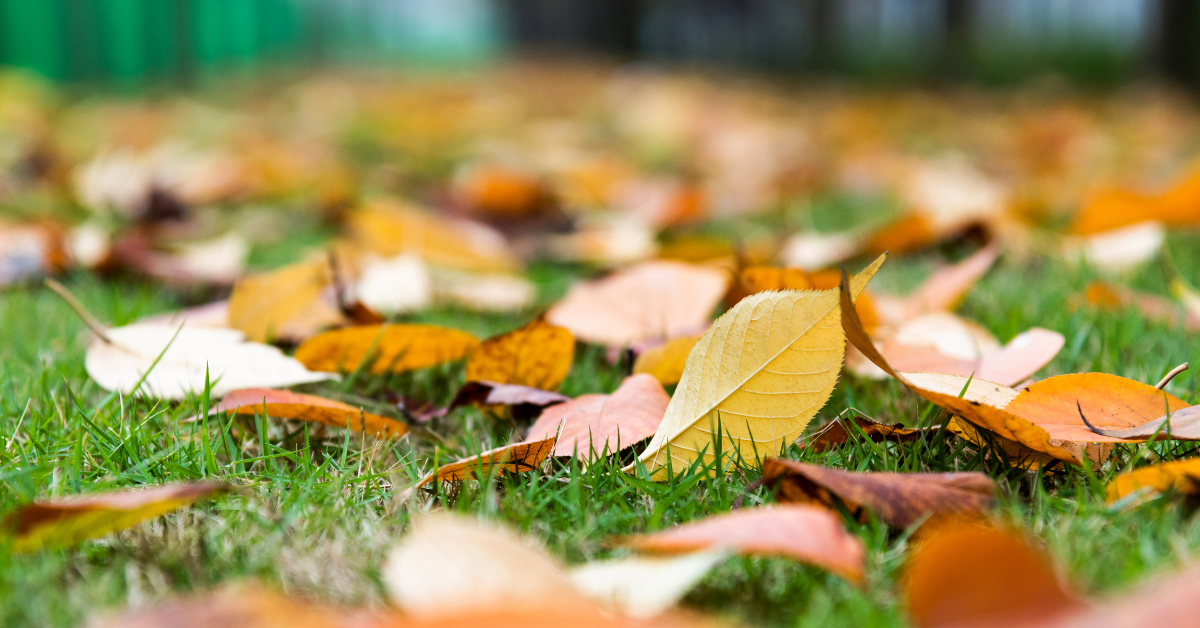
To leaf blow or not to leaf blow? That is the question. While some propose skipping collecting leaves entirely, there’s a little bit more nuance to this question and what to do with your clients’ leaves this fall.
Where the leaves have fallen will help determine your course of action. While leaves in heavily wooded areas are best left alone, leaving them to pile up on yards can kill the grass beneath. Thick layers of leaves reduce the sunlight and air that is able to reach the turfgrass and can smother a lawn. When leaves get wet from rain or snow, they can harbor fungi and other diseases.
Mulch Them
One way to reap the benefits of the nutrients fallen leaves can provide without endangering your client’s lawn health is to mulch them. Leaves must be chopped into pieces small enough to fall down between the blades of grass. When finished, very little leaf debris should be visible. Mowing is best done when the layer of leaves is thin and dry.
“We recommend using a mulching mower on your turf to shred those leaves,” says Lou Meyer, an arborist with The Davey Tree Care Company. “As you move along, don’t bag and remove them off-site. Return those nutrients to the soil and it can help minimize your fertilization needs the following year.”
By chopping the leaves up with a mower, light and air can still reach the soil while the leaves are allowed to break down over time on the lawn. Michigan State University has been mowing their leaves since 1999 and the shift allowed them to save $30,000 per year from the university’s leaf cleanup budget.
Crop and soil science students also studied the impact of leaving these mulched leaves on the turfgrass and found 80 percent fewer dandelions in the test plots and about 50 percent fewer in the second year.
Leave Them Be
If your clients have landscape beds, you can relocate the leaves here as they provide both nutrients and help retain moisture. They can also be used to insulate the ground over the winter and protect perennials from extreme cold. It is important to keep them away from the base of shrubs and trees and off evergreen perennials.
Leaving leaves alone in wooded spaces or in your landscape beds also provides cover for various wildlife.
“Leaving your leaves on-site offers a lot of opportunities for real environmental benefits,” Meyer says. “One of the biggest benefits is habitat for pollinators. Moths, caterpillars and bees all overwinter in leaf litter, so having some of that around your property can go a long way to supporting their populations.”
It is advised not to mulch the leaves if your customers want to help provide shelter for insects and animals.
Compost Them
If you have clients who don’t want leaves on their property whatsoever, you can bag them up. However, rather than taking this green waste to a landfill, you can take the leaves and compost them at your facility, if you have the space.
Sun Valley Landscaping is one company that composts their green waste.
“Composting absolutely offers savings!” says Eric Walker, Sun Valley’s supply yard manager. “It saves tons of time and money for our landscape division since our crews do not have to take extra trips to a dumping facility so it saves quite a bit on the bottom line. Once we have the final product, we are able to monetize it by selling it.”
Even if you aren’t able to compost the leaves at your own business, there are numerous operations that can put these leaves to good use at their own recycling or composting facility.


